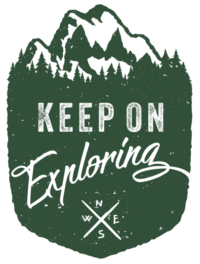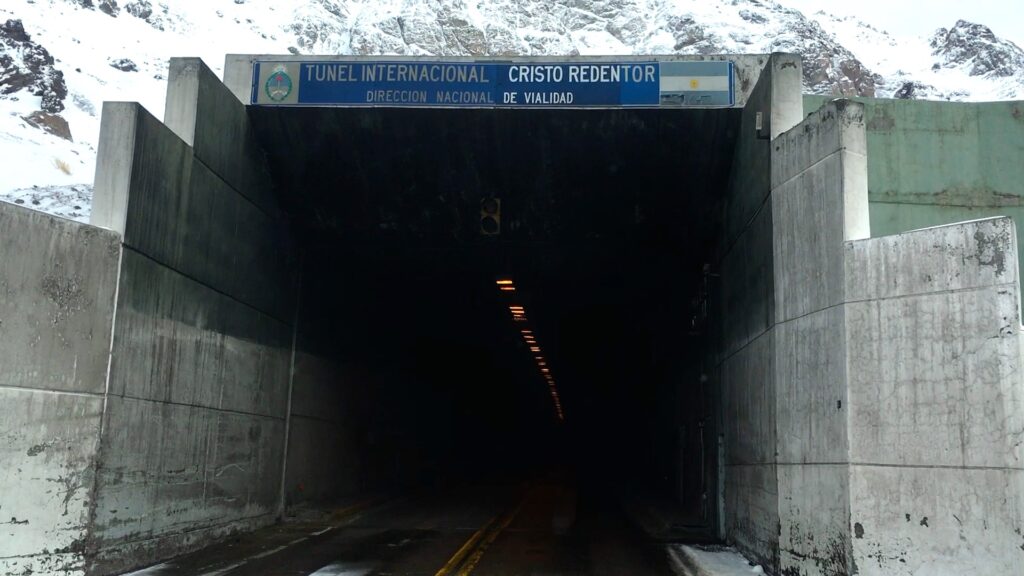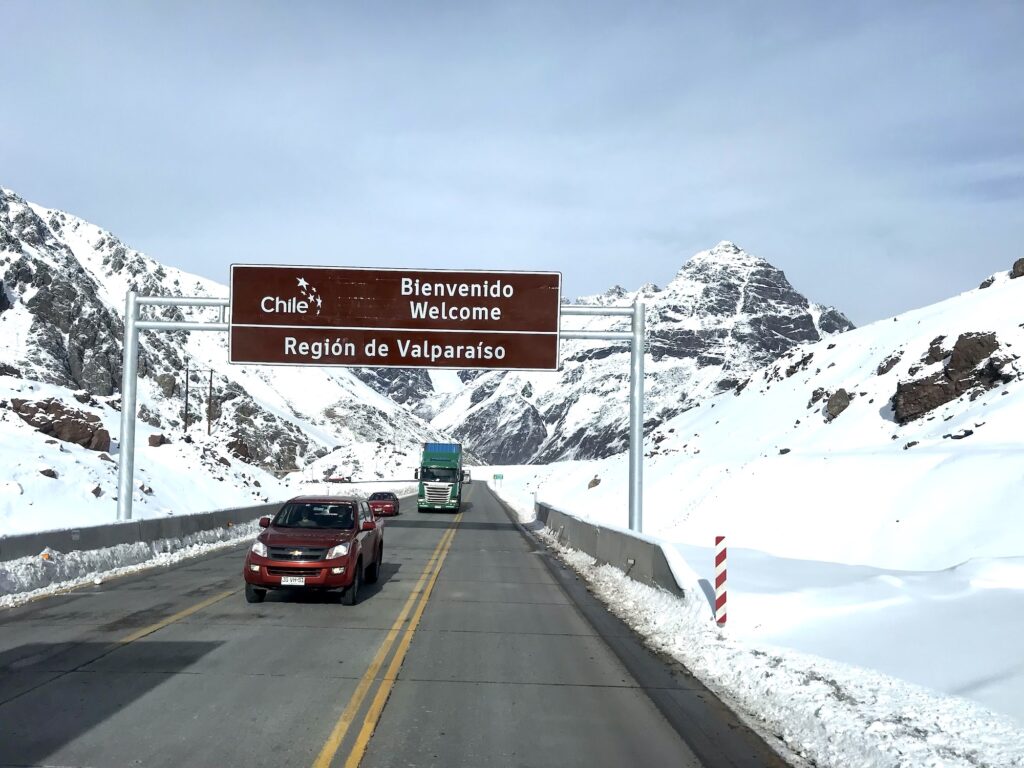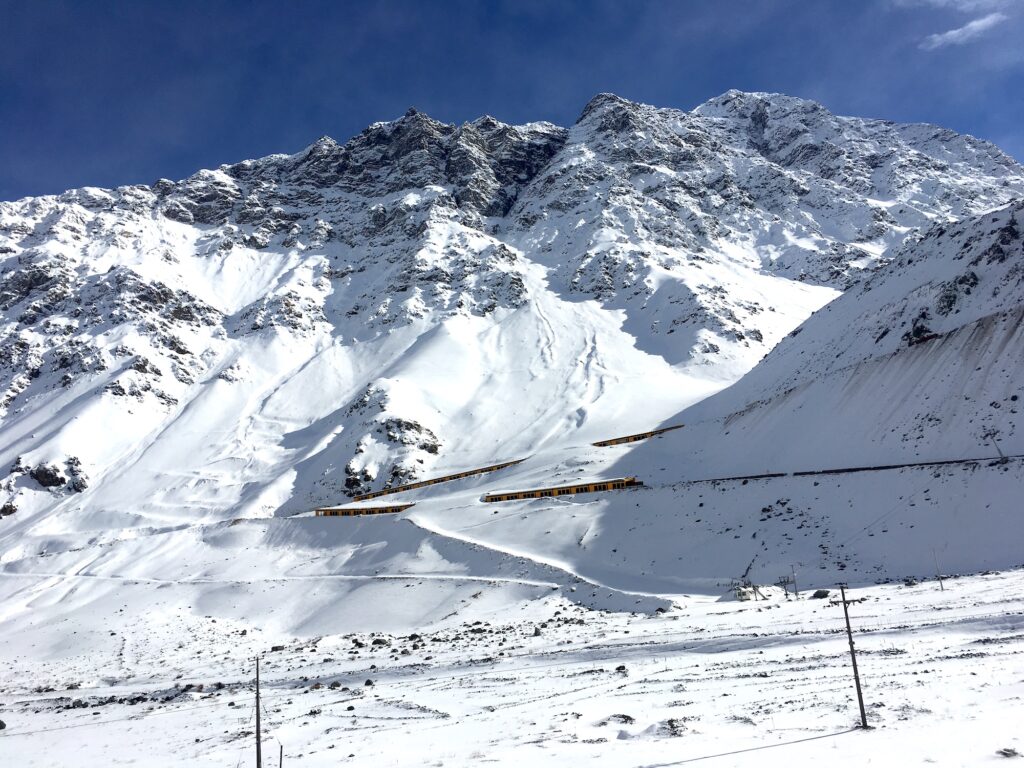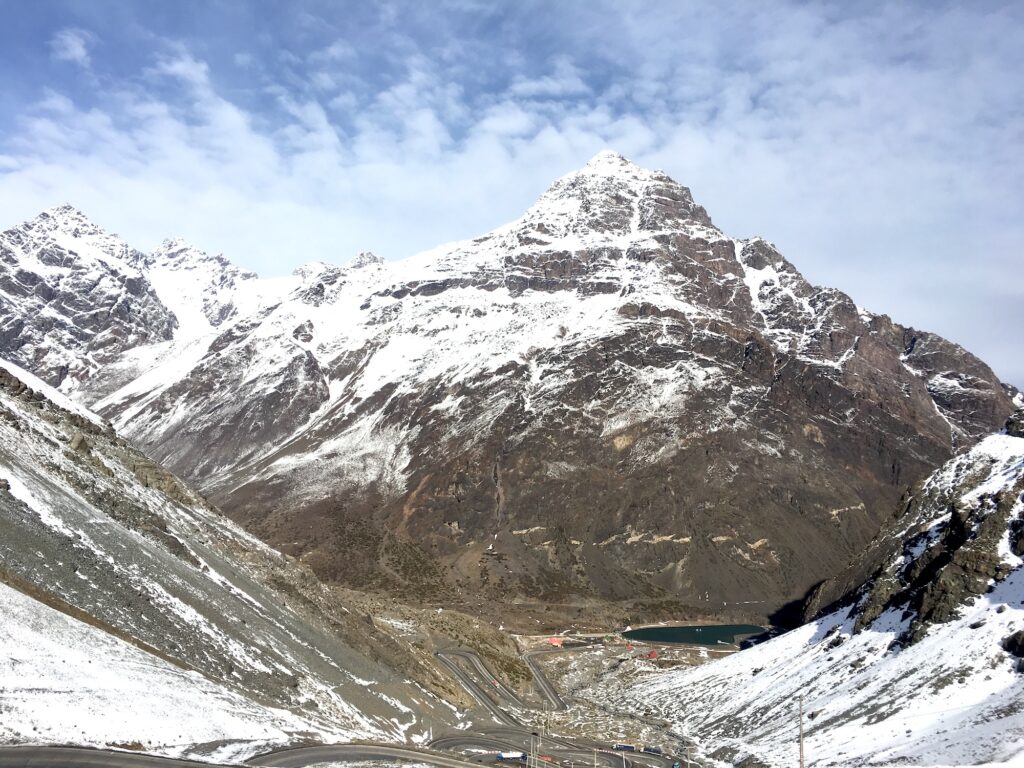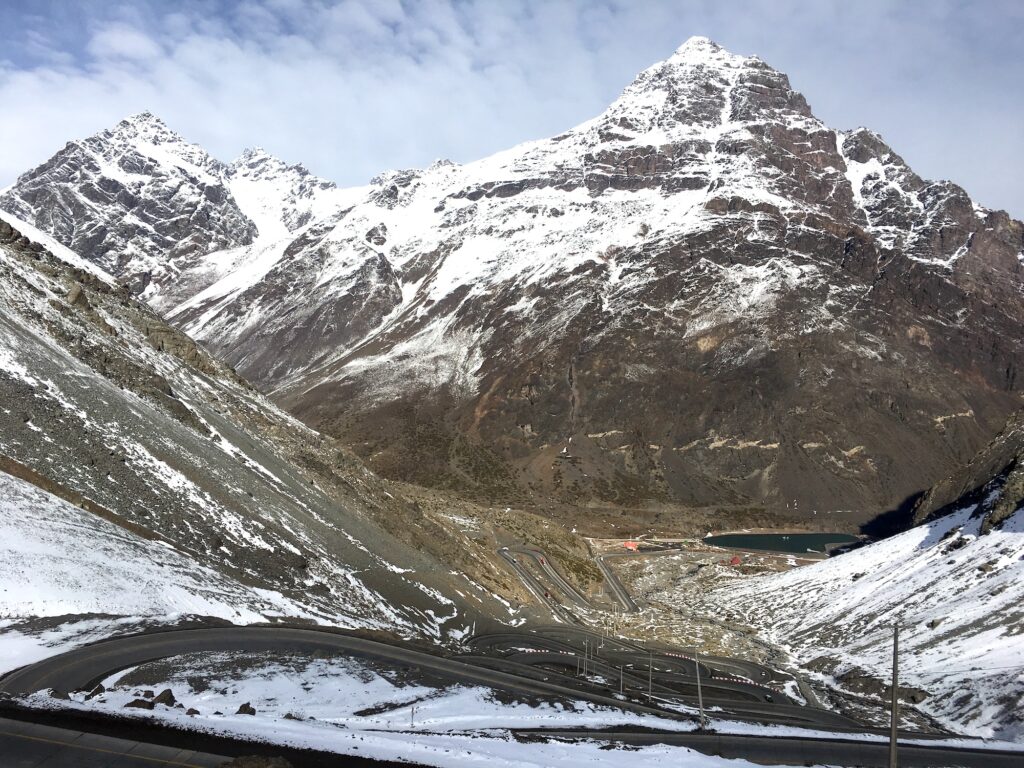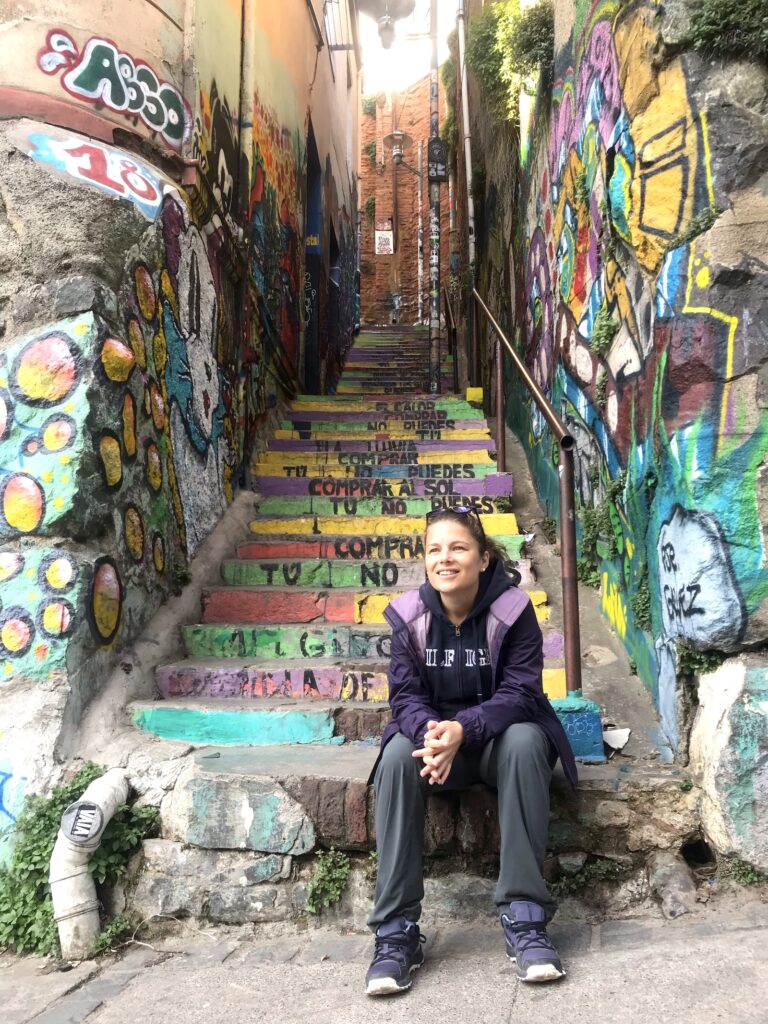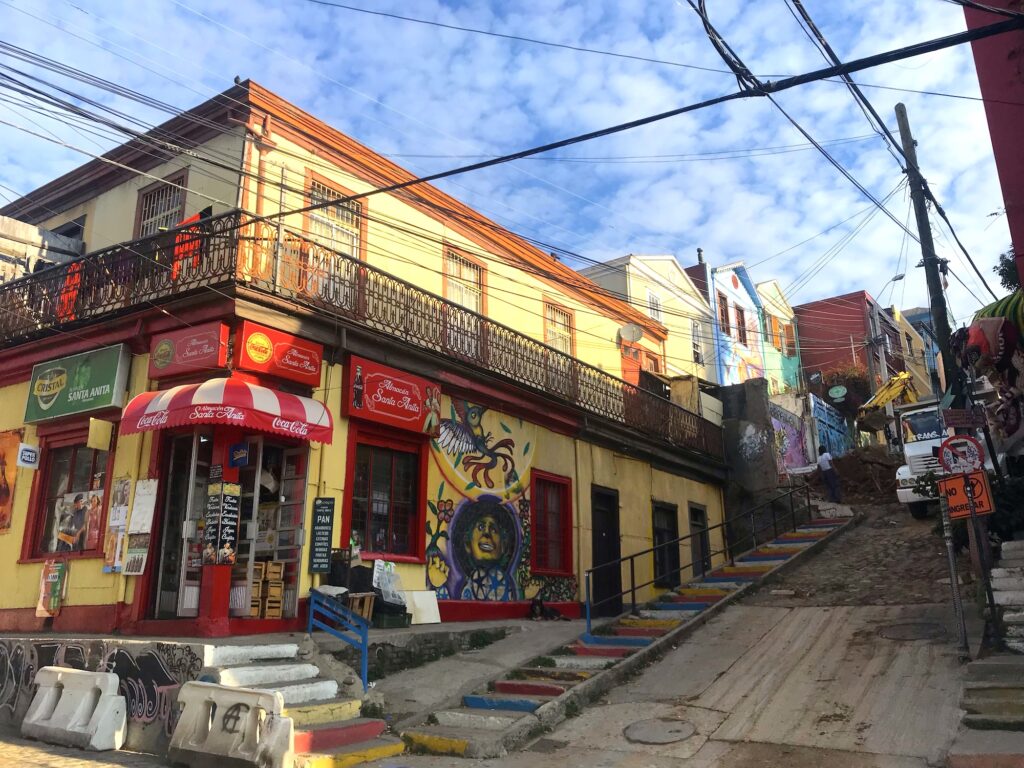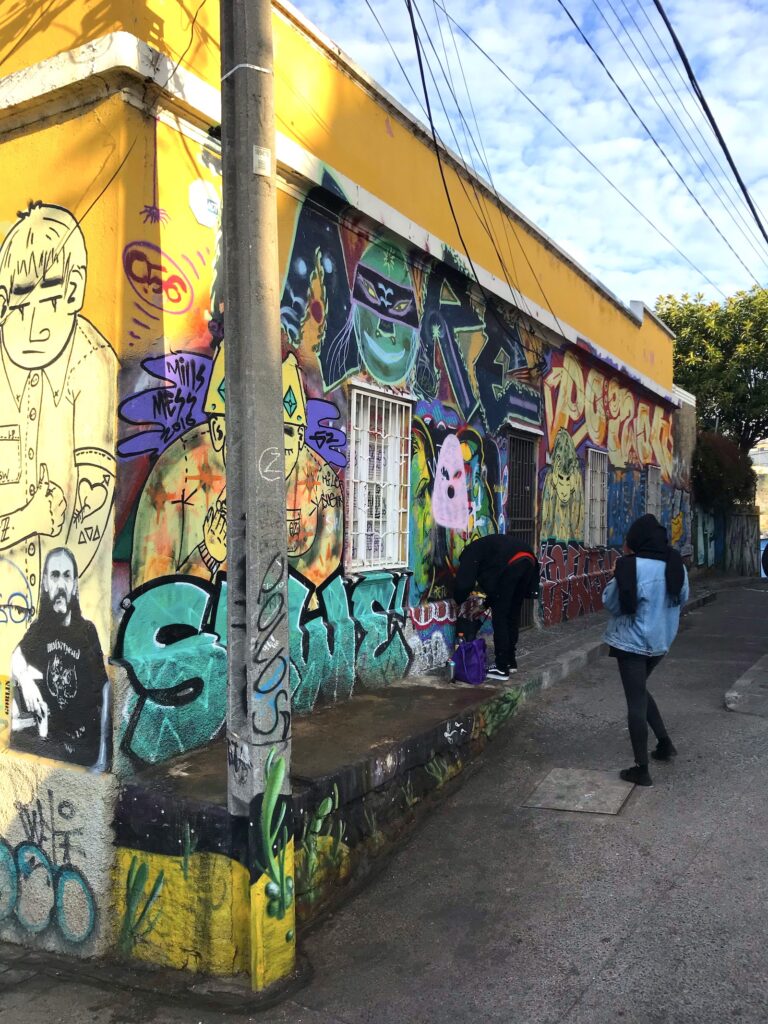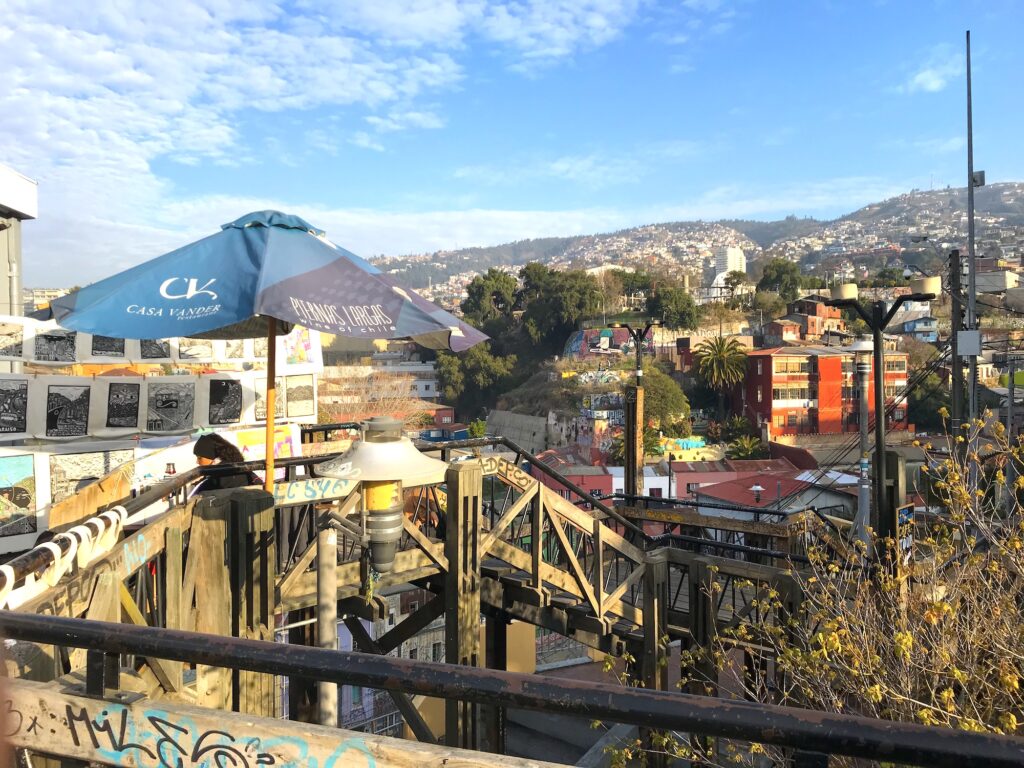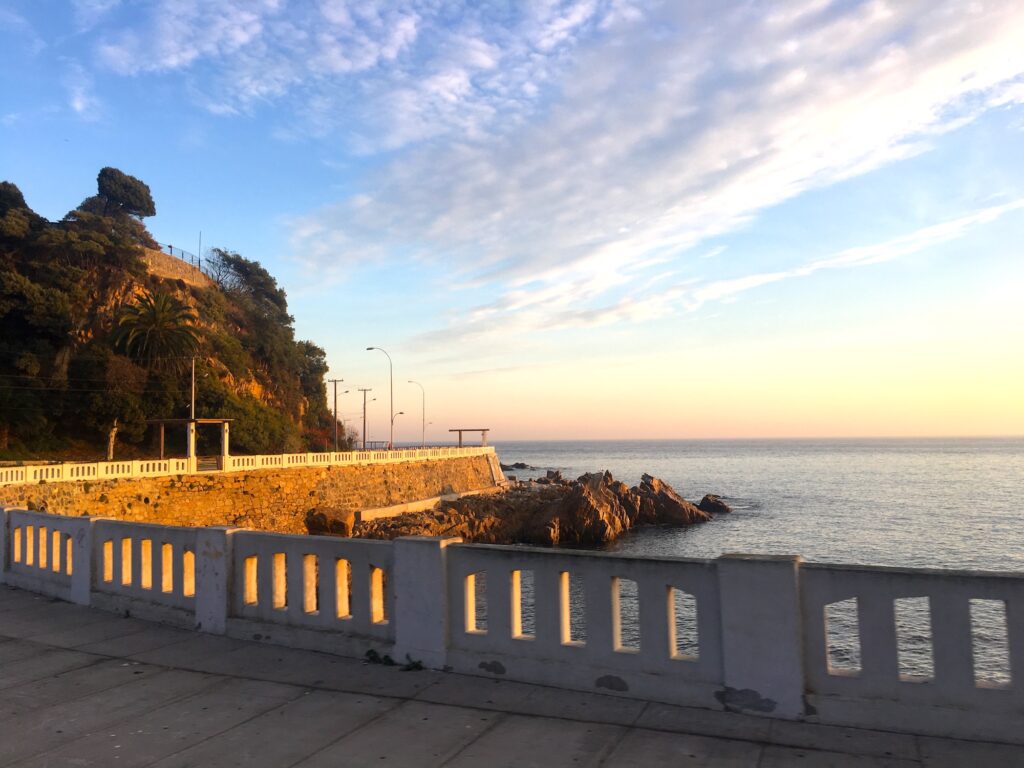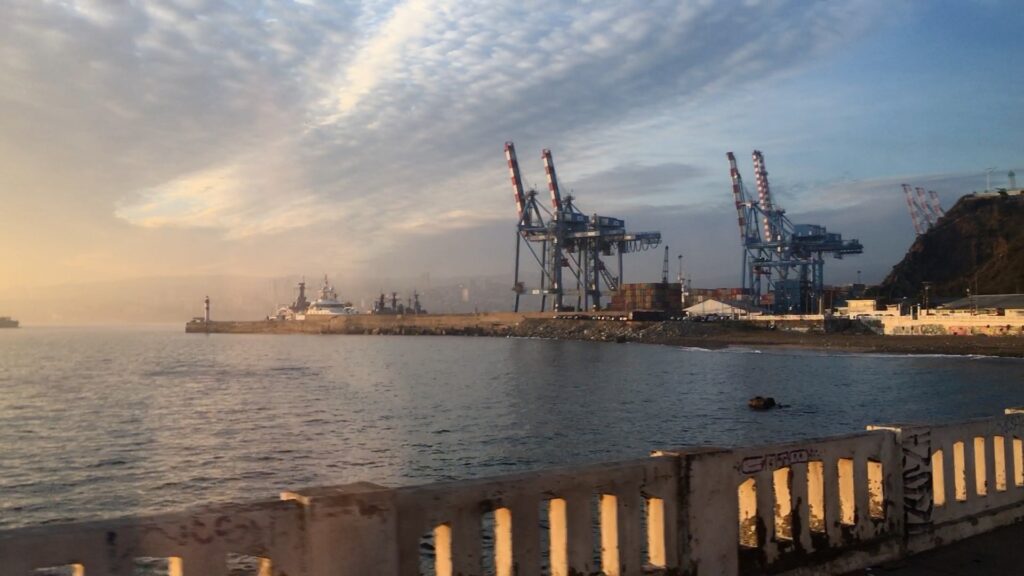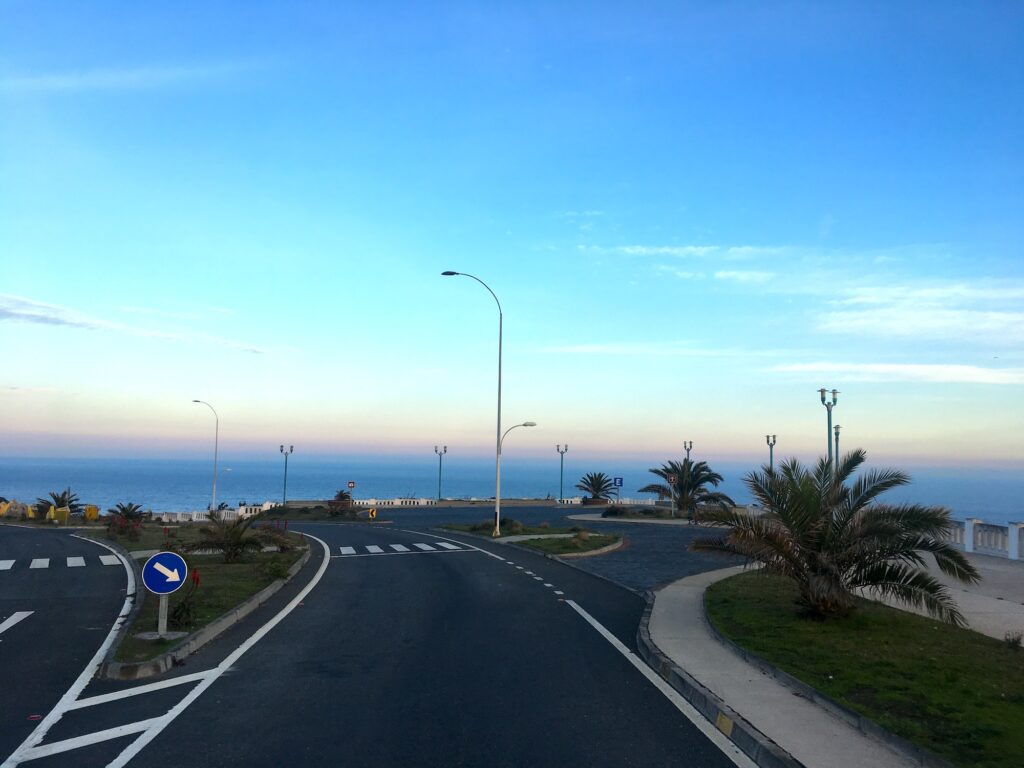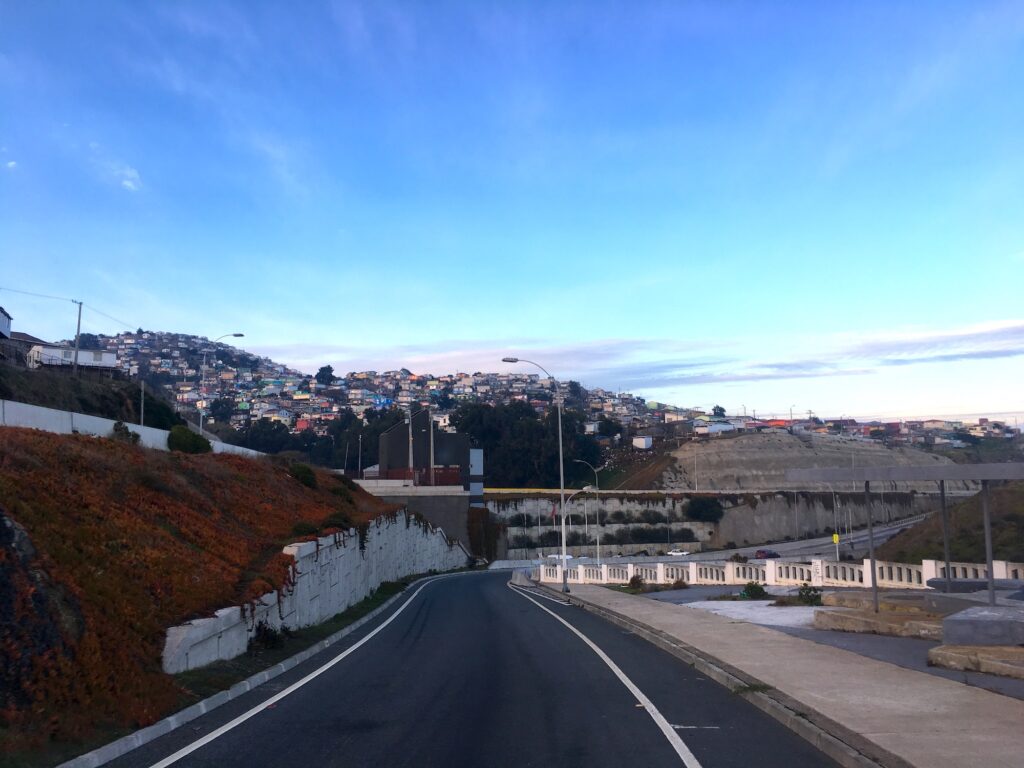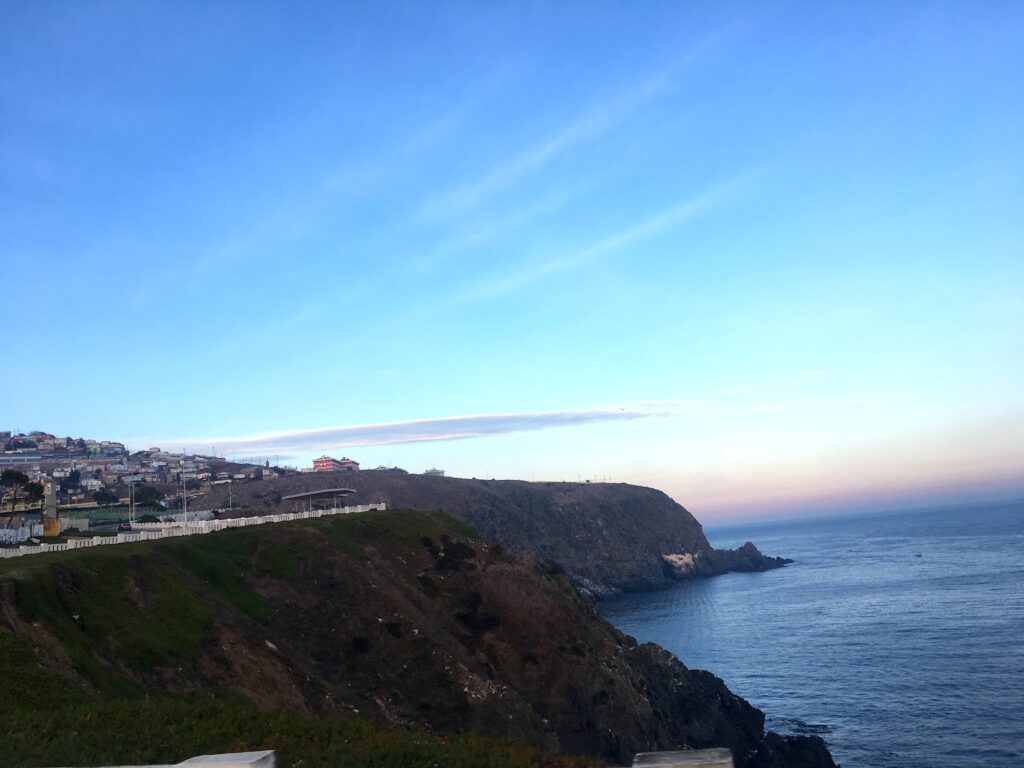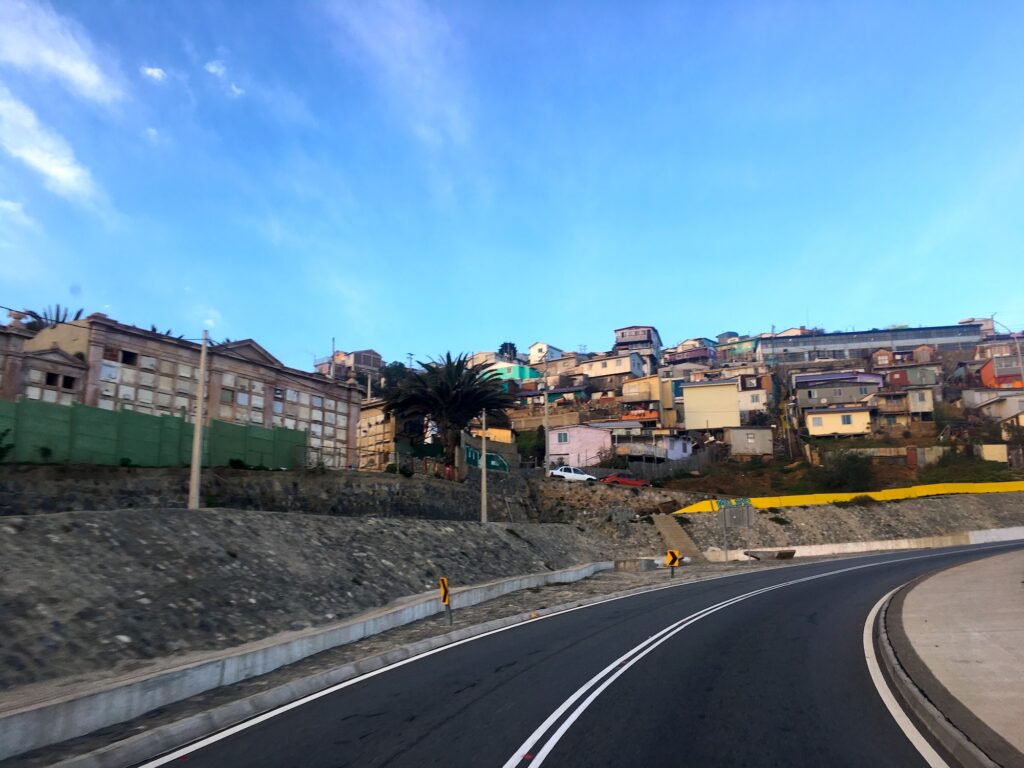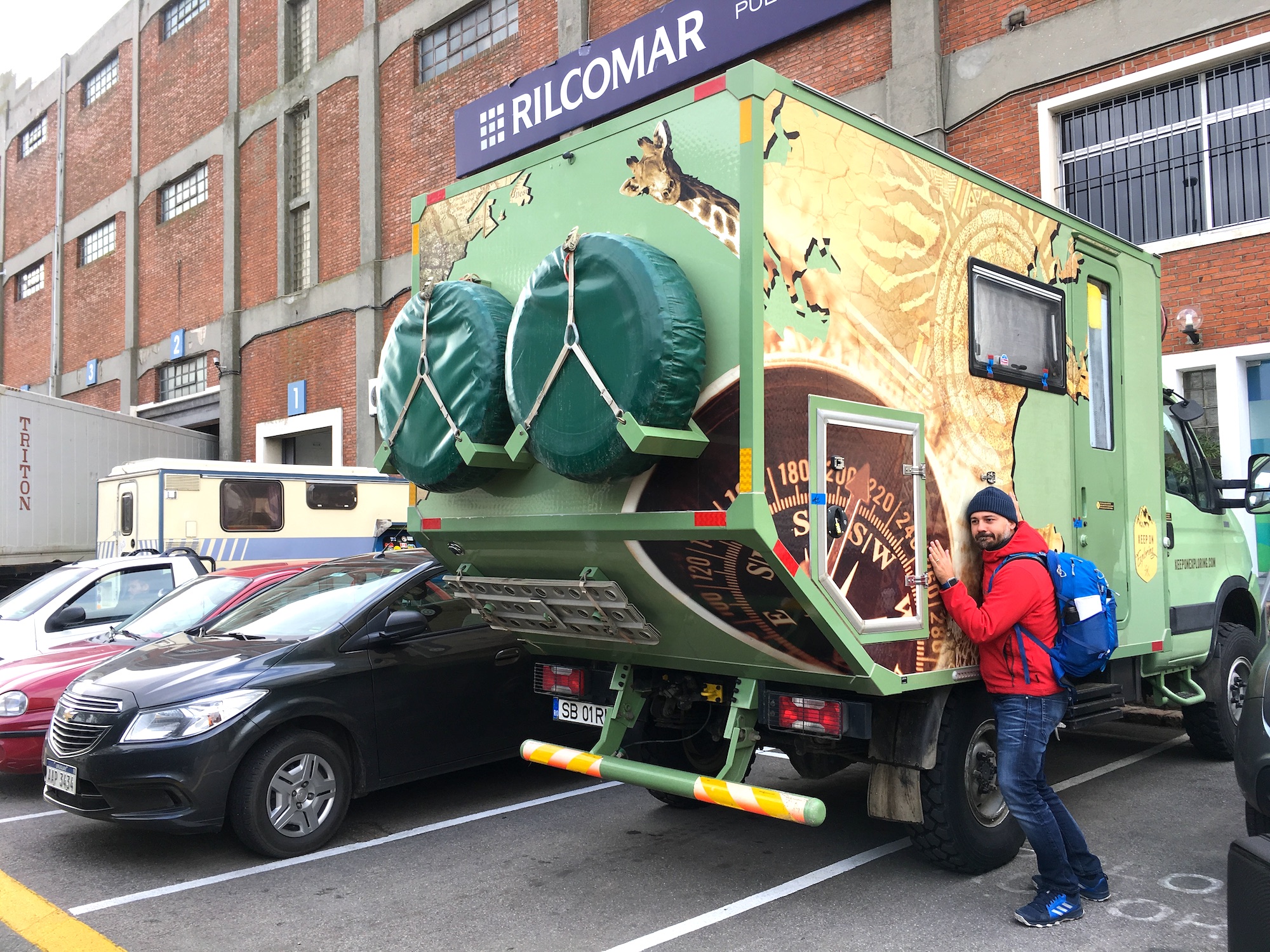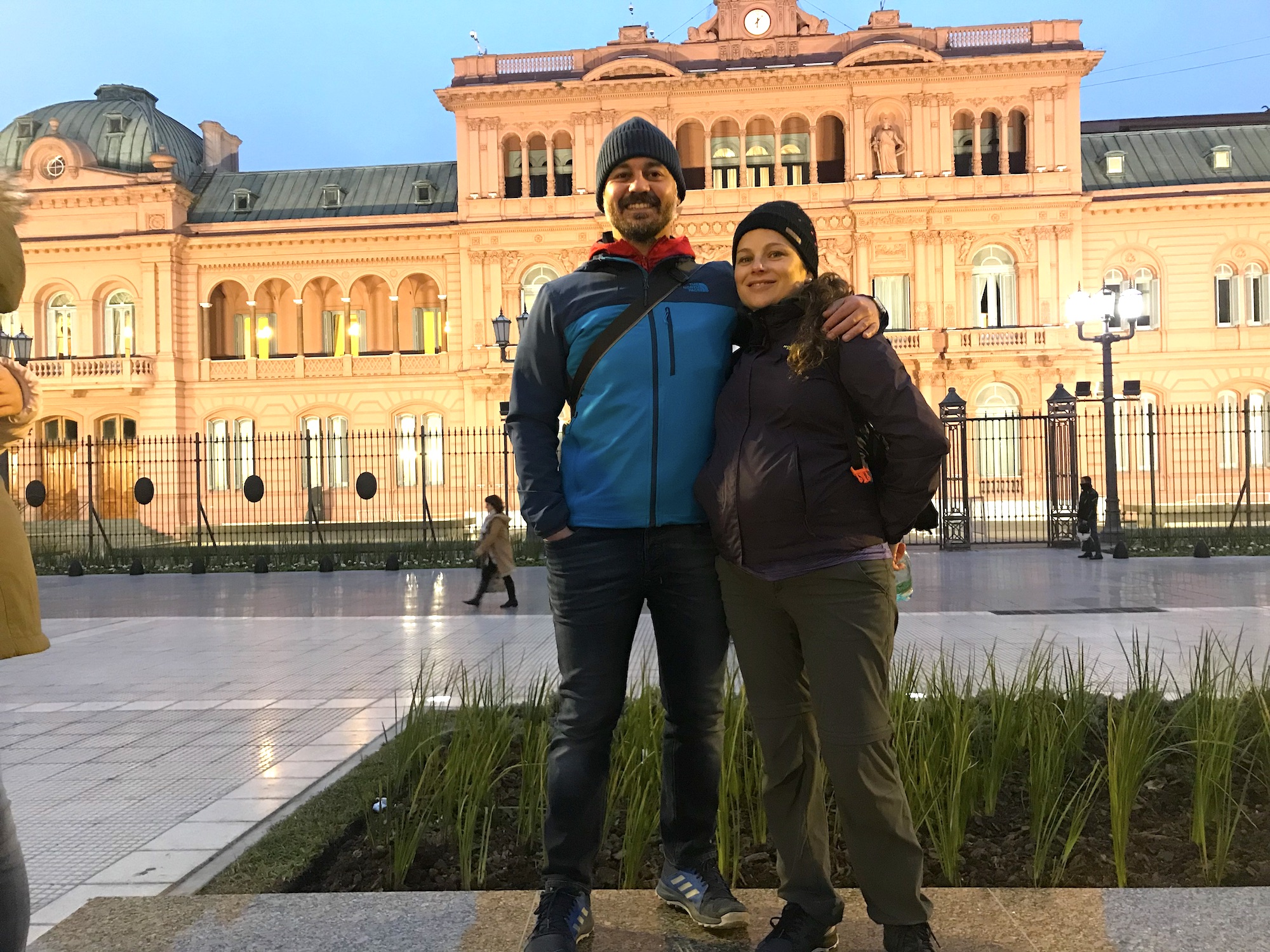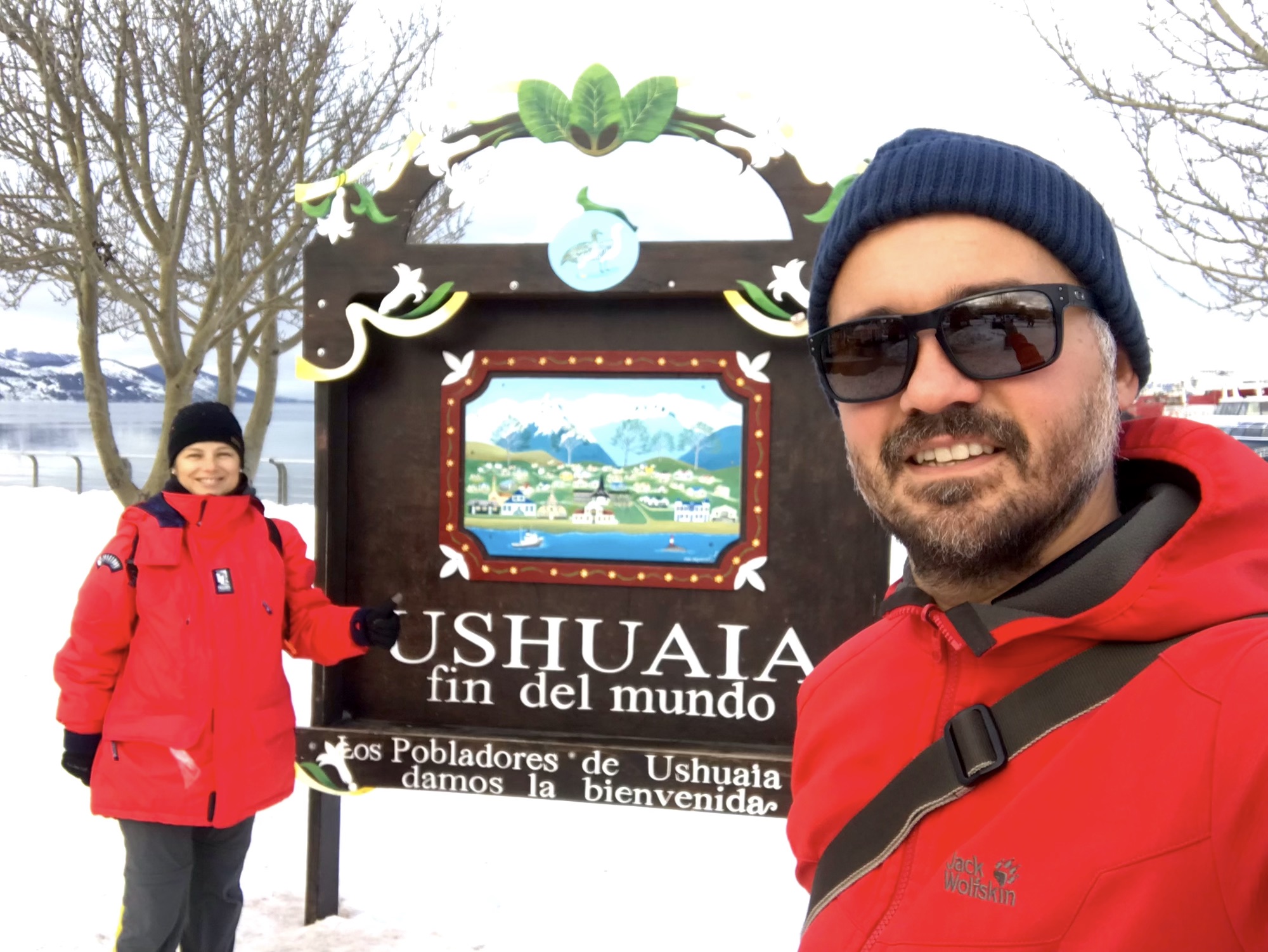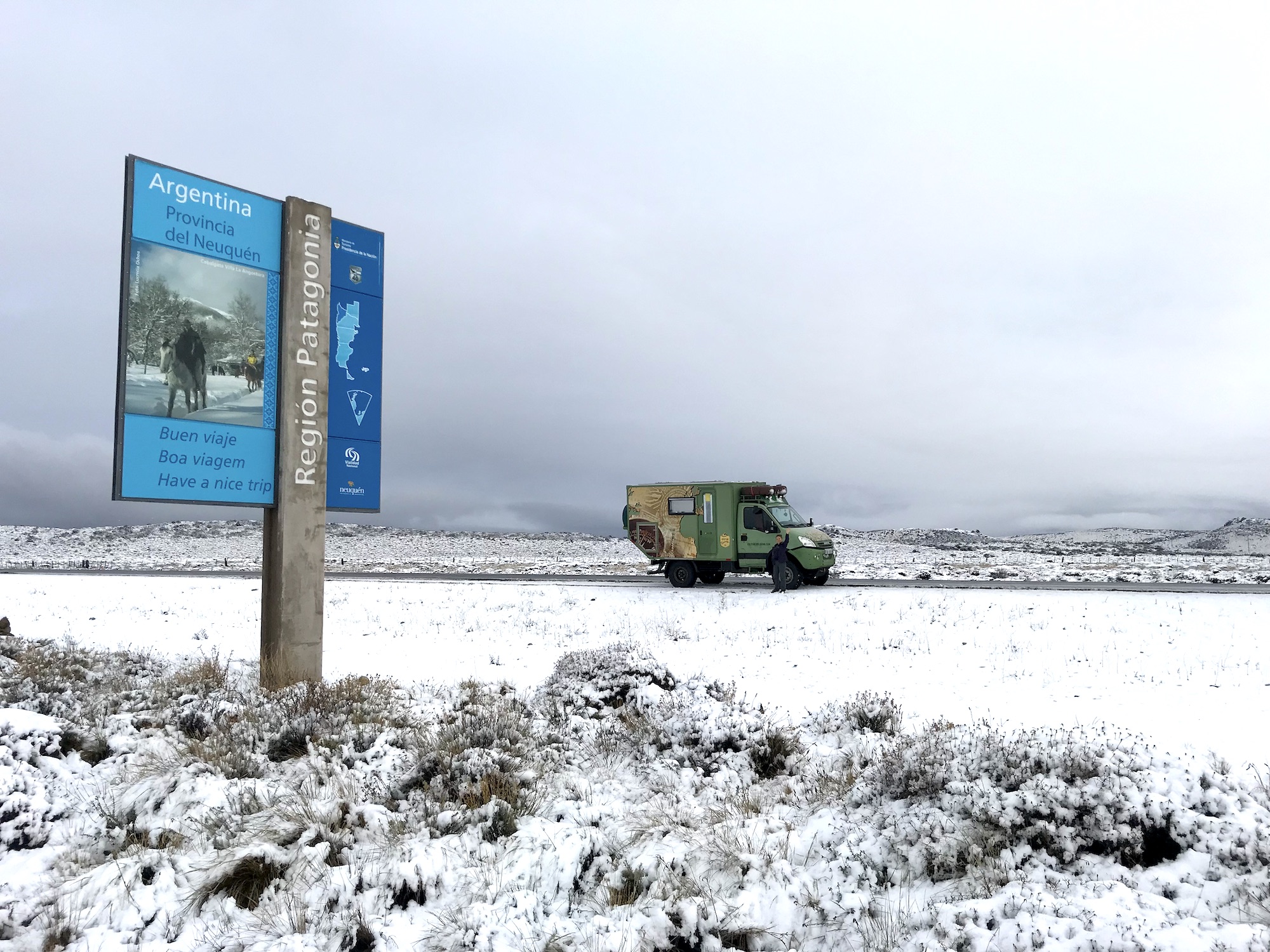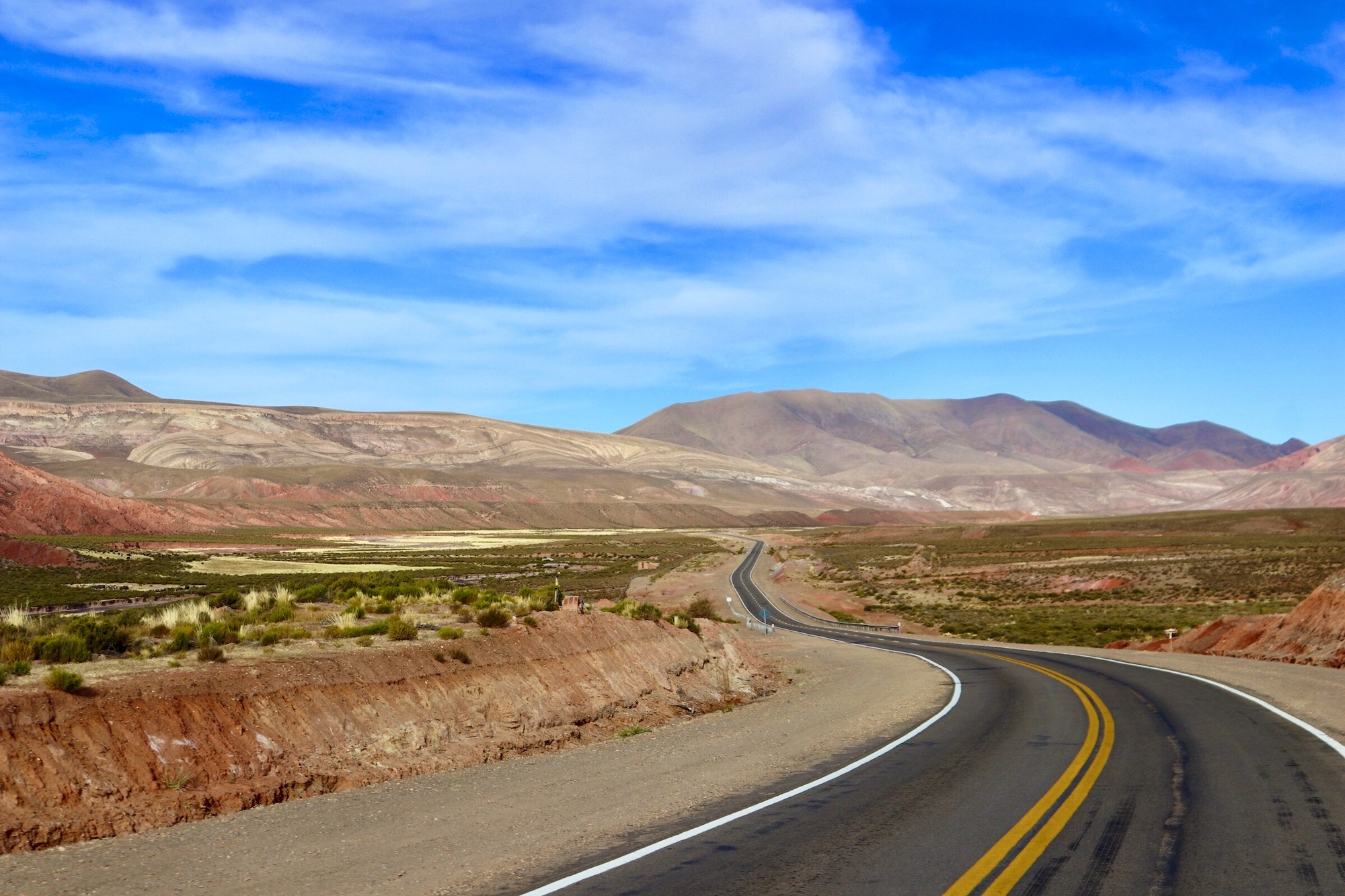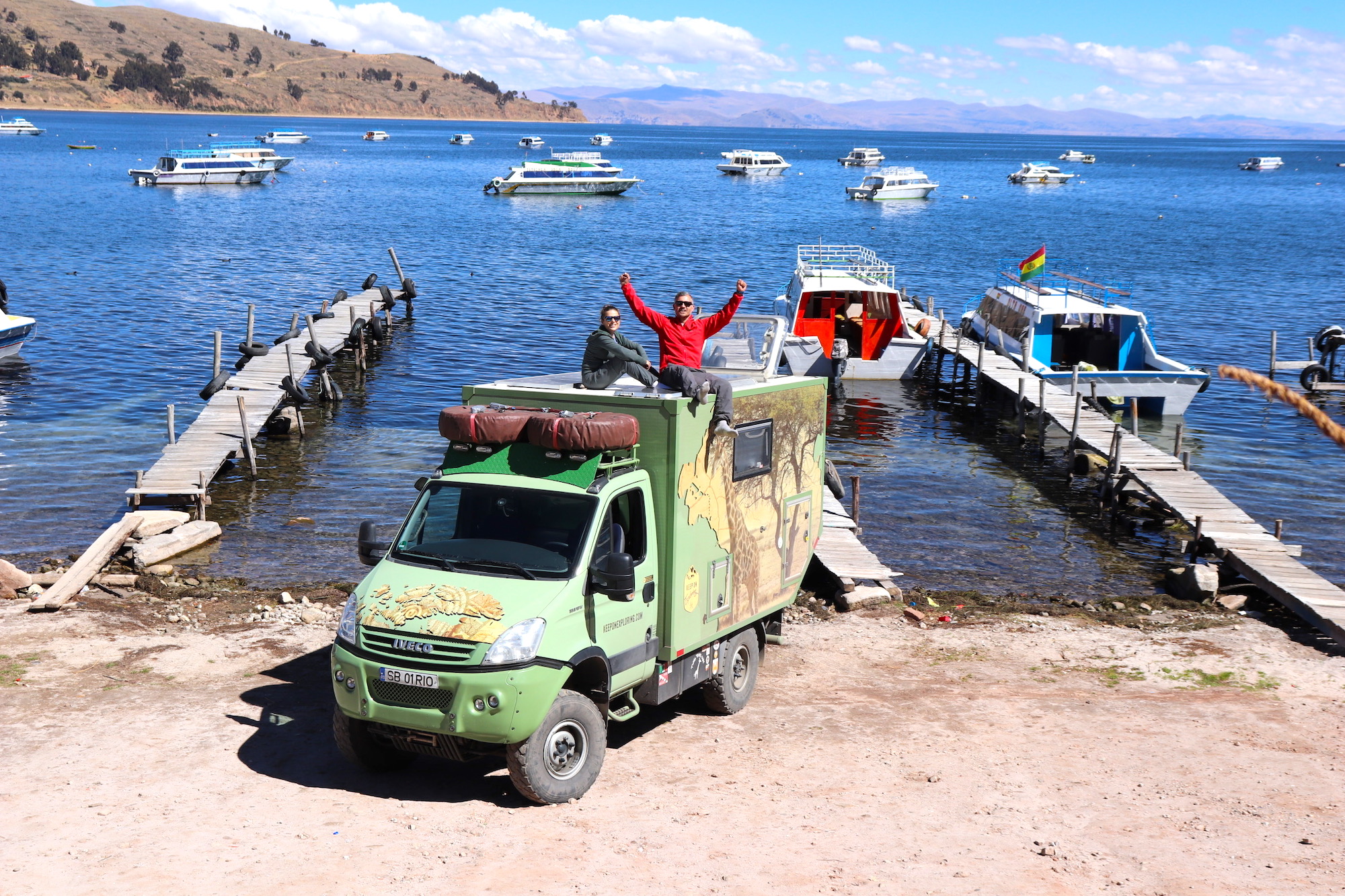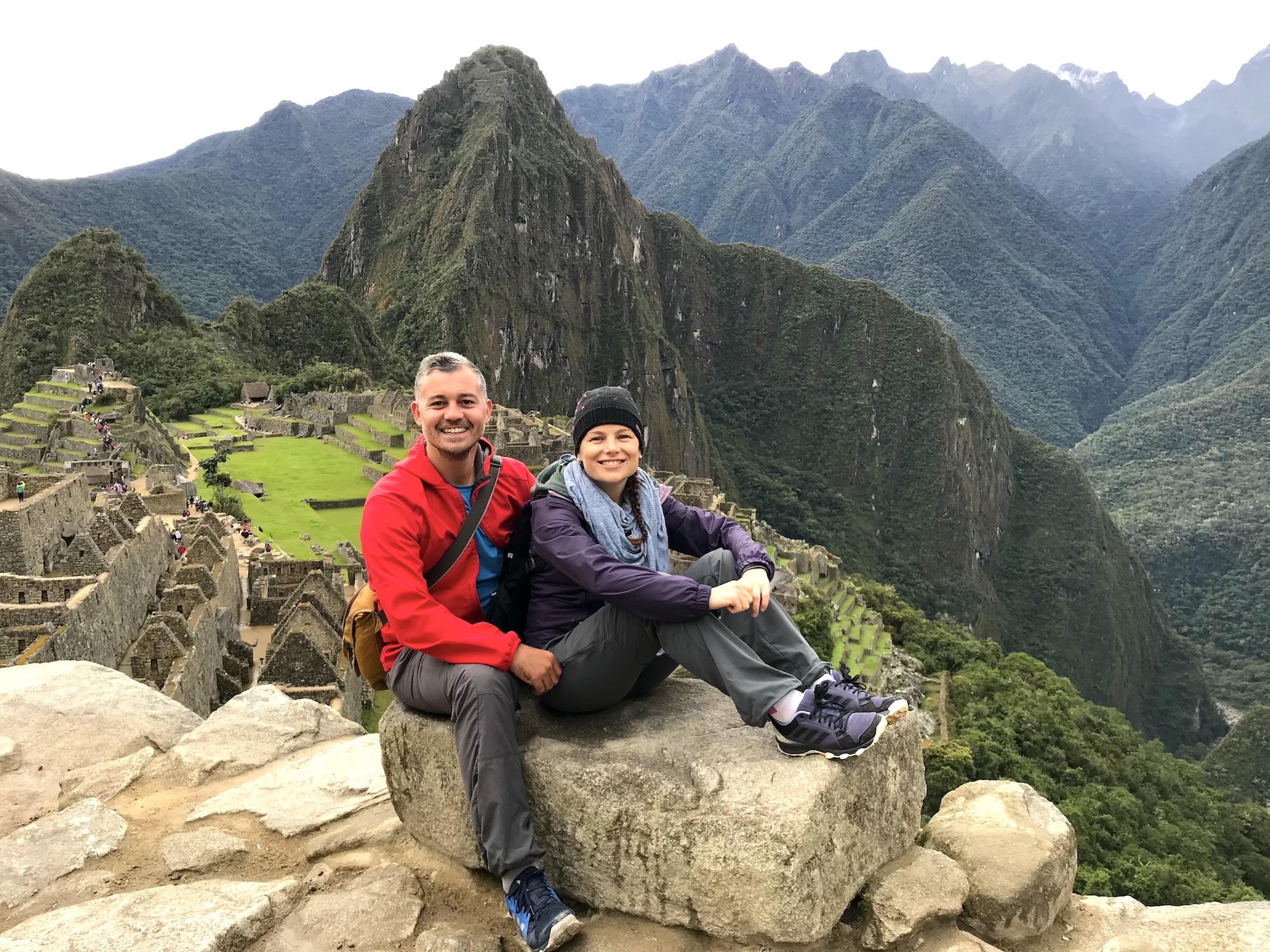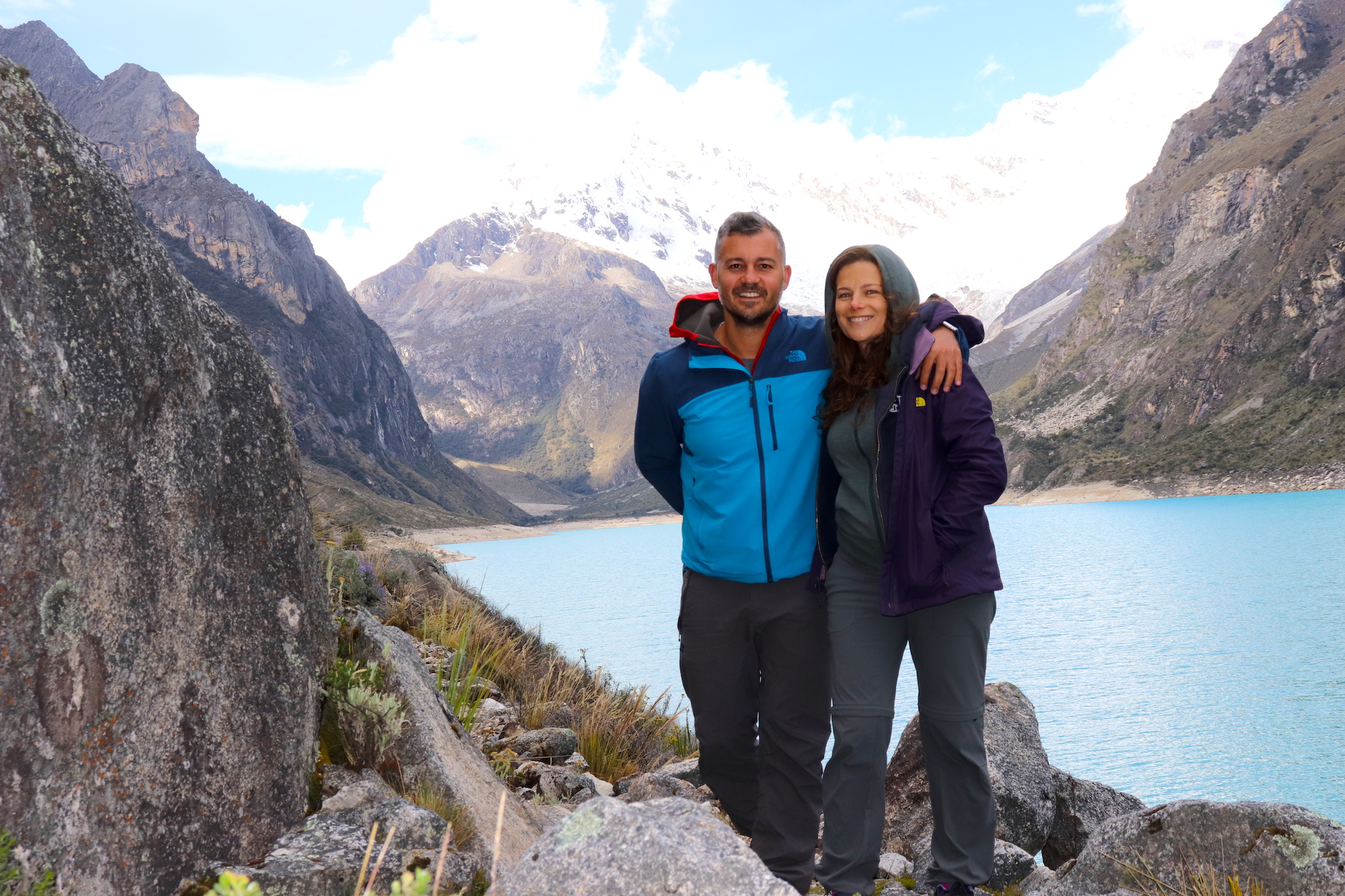We crossed into Chile from Mendoza province of Argentina on the Pan American Highway. We were curious to experience the most prosperous country of South America with its bohemian city port of Valparaiso and diverse nature layered on the long and narrow strip of land.
From the very beginning the country impressed us with its great infrastructure, flourishing economy, organization, spectacular coastal and mountainous nature and sophisticated cuisine, but as well with its considerable higher prices.
We cruised the state until the coquette mountain resort of Pucón, where we traversed through the snow powdered Andes back into the more affordable Argentina.
Our stop over in Chile was short but enough to realize it’s a great country to visit on a different budget.
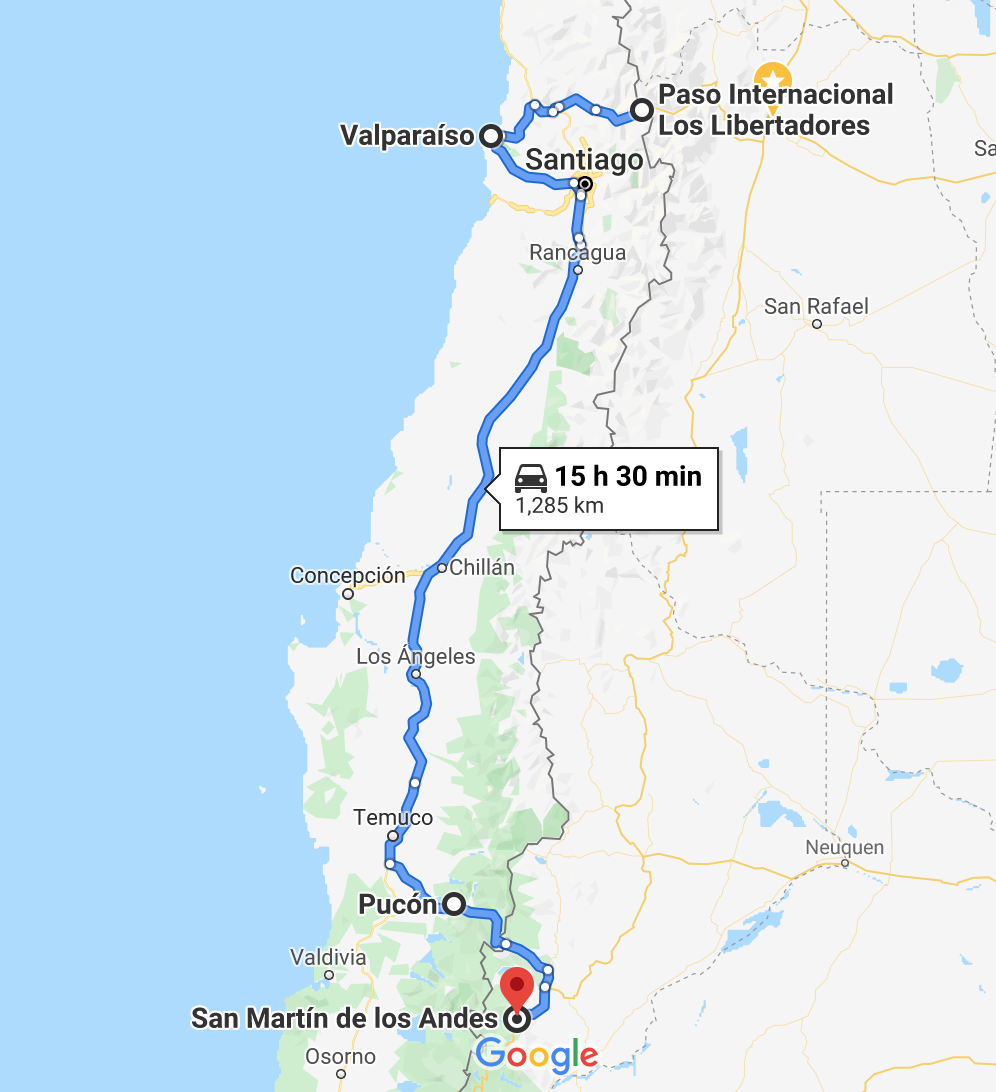
Paso International Los Libertadores: Argentina-Chile
We entered Chile at Paso International Los Libertadores located next to the highest mountain of the Americas, Aconcagua. There is a 3km tunnel that traverses the Andes, called Christ the Redeemer, which delimitates the border line with Argentina. We were lucky to get there just before the heavy snow falls that could block both ends of the underpass.
Hearing that the Chilean customs would not allow us with any fruits and vegetables that are not produced in the country, we prepared for a diligent food inspection. To our surprise the officers were very friendly and polite, taking away just some vegetables we stored in the fridge. We found an efficient and pleasant modus operandi at the border.
Driving down the pass on the Chilean side we came across with a spectacular spiral road offering phenomenal views to the snow covered Andean summits.
Descending the steep mountains towards the city port of Valparaiso, we observed a much more developed set up compared with the other countries of the continent. There was a superior infrastructure, good roads, a flourishing industrial scene with plenty of factories, fruit tree plantations, vineyards, all looking organized and clean.
The “Little San Francisco”
Our first “must go” in Chile was Valparaiso located just 160km from the border with Argentina. Known as the “Little San Francisco” or the “Jewel of the Pacific”, the port city was a major stop over for the ships crossing the Strait of Magellan. That made it a strategic maritime hub, attracting a lot of prosperity and European immigrants. Once the Panama Canal opened, the traffic of the port decreased, and with this its economic power too. Most of the rich people abandoned the city.
But in the past years Valparaiso transformed into an educational, cultural and artistic center attracting tourists from all over the world for its hillside historical districts, creative graffiti, an urban labyrinth of colorful buildings, cultural events, sophisticated restaurants and artsy coffee shops. Learning all these about Valparaiso, we could not miss the encounter.
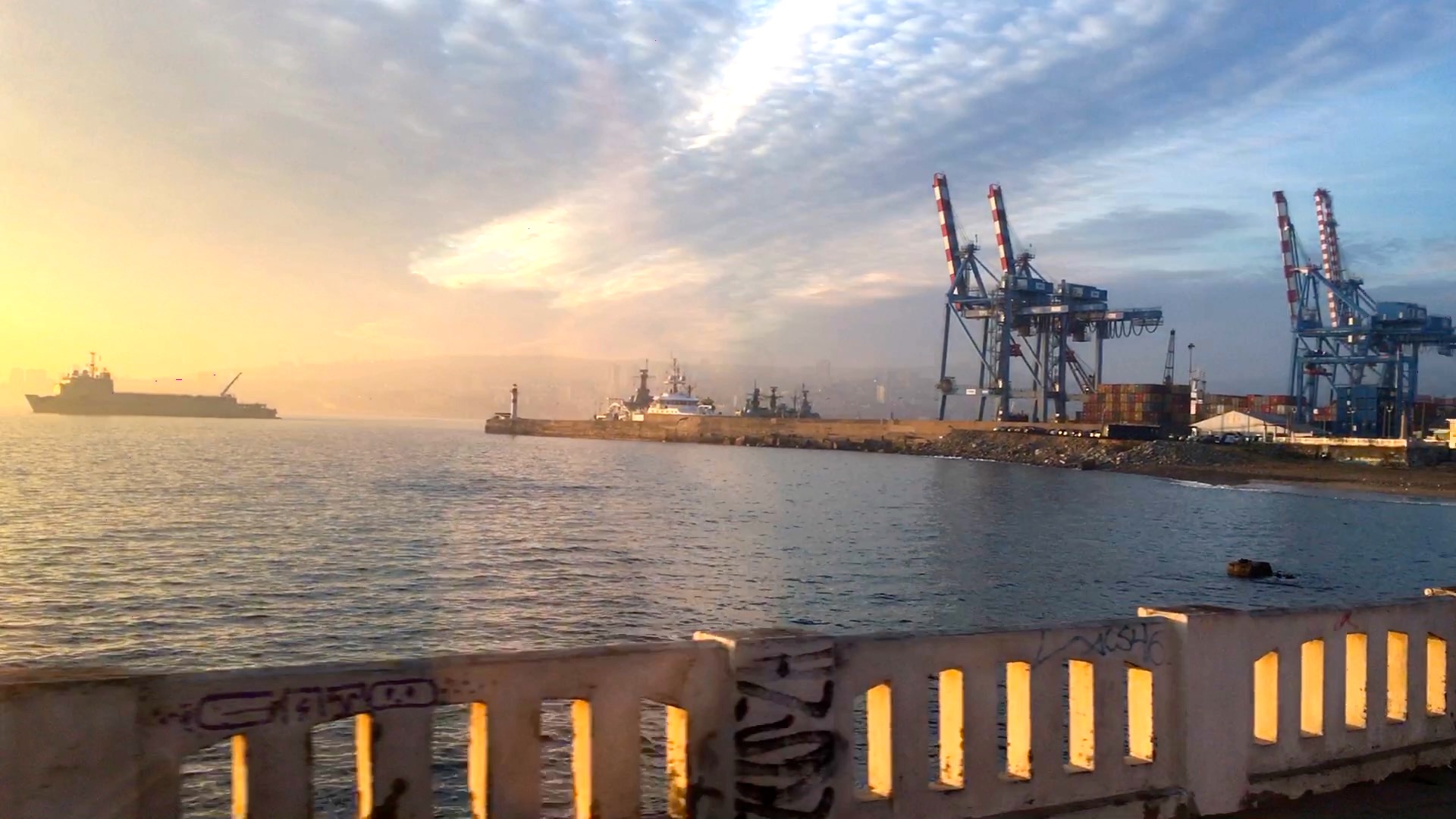
The first impressions on the city port of Valparaiso
We entered the city through its modern part, where we observed a great urban planning with a cosmopolitan architecture and a bustling scene. It seemed to be an active and busy environment with people going to work and students rushing to classes.
As soon as we approached the historical part of town, located near the port, there was a different vibe. On one hand we were welcomed by a great ocean view with the colorful historical buildings facing the water, on another hand iOverlander travel application was warning us about thieves that cut the cars’ tires at the traffic lights to hijack the vehicles. We were a bit concerned. Thus we paid a lot of attention at what was going on the street and luckily we advanced towards our overnight parking lot without indents. The place was located next to the port.
As we reached the gated parking lot, we felt a bit too adventurous to stay there. The neighborhood didn’t seem safe and the overnight spot a bit sketchy. But it was our only chance to explore the hilly neighborhoods of Valparaiso located at walking distance. So with all the risks involved we decided to stay.
Discovering Valparaiso
We were walking cautiously on the coastline area searching the historical part of town. There were plenty of homeless people, an apparent insecure set up and a gloomy atmosphere of the back streets of the port. When we saw a group of police officers guarding the area we approached and asked:
“Is it safe to walk around here?”
“No, it is not safe. You need to be very careful and please avoid these streets”, pointing out the ones to avoid.
"Well, not very encouraging” we thought.
“So what now?" we were looking at each other.
“Shall we return? We came all the way to see Valparaiso, so let's explore it!” JP and I concluded.
Climbing up the stairs of the urban sprawl we finally found the alluring neighborhoods set on hills with lots of graffiti art, narrow cooble stone alleys, painted stairs, tall colored houses, boutique coffee shops and fine restaurants.
The labyrinth of historical buildings created a sensation of hidden gems, something to discover at each corder. Every colored building had a story to tell about the prosperous past of Valparaiso and its artsy present days. The urban setting, the atmosphere and coastal climate resembled of San Francisco we met in the northern hemisphere of the continent.
The treat of the day
Happy to discover the charming historical part of town we wanted to find a nice restaurant to enjoy an authentic treat. And luckily there were plenty of options. We set for Casalegre, a restaurant located near Cerro Alegre neighborhood and Ascensor Reina Victoria. The vivid and bohemian location attracted us from the first sight. We were finally in the right spot.
JP enjoyed a quesadilla as starter, mackerel with risotto as main, a “pana cota” as desert while I had a a zucchini soup, fetuccini with mushroom sauce as main and cheese cake as desert. We were impressed with the Chilean exquisite culinary offer and did not expect such delicious proposals.
Flipping the coin
But with a great service, great food and a developed economy, there is the other side of the coin, the price. Not only our lunch was a pricy affair, but the moment we set foot in Valparaiso we noticed that everything was more expensive than in Argentina.
For any cash withdrawal we had to pay 8 euro at the ATMs. Maximum withdrawal commissions we paid was 5 euro in the USA. Our weekly grocery shopping cost 160 euro, while for the same products we would pay elsewhere about 100 euro. For 5 bananas and 1 grape I paid 6 euro at a nearby corner shop. Products we would get in any country in South America for about 3 euros. Chile was practicing prices we experienced only in the USA. Plus the gas was more expensive than in Argentina.
We appreciated the good service we received in Chile, the refined food, cruising on spotless highways, enjoying the benefits of first class gas stations, seeing a society in Latin America so clean and progressive. But the price we paid for it and the wintertime approaching in Patagonia, made Argentina a better proposition to continue south the continent towards “Fin del Mundo” on the Pan American Highway.
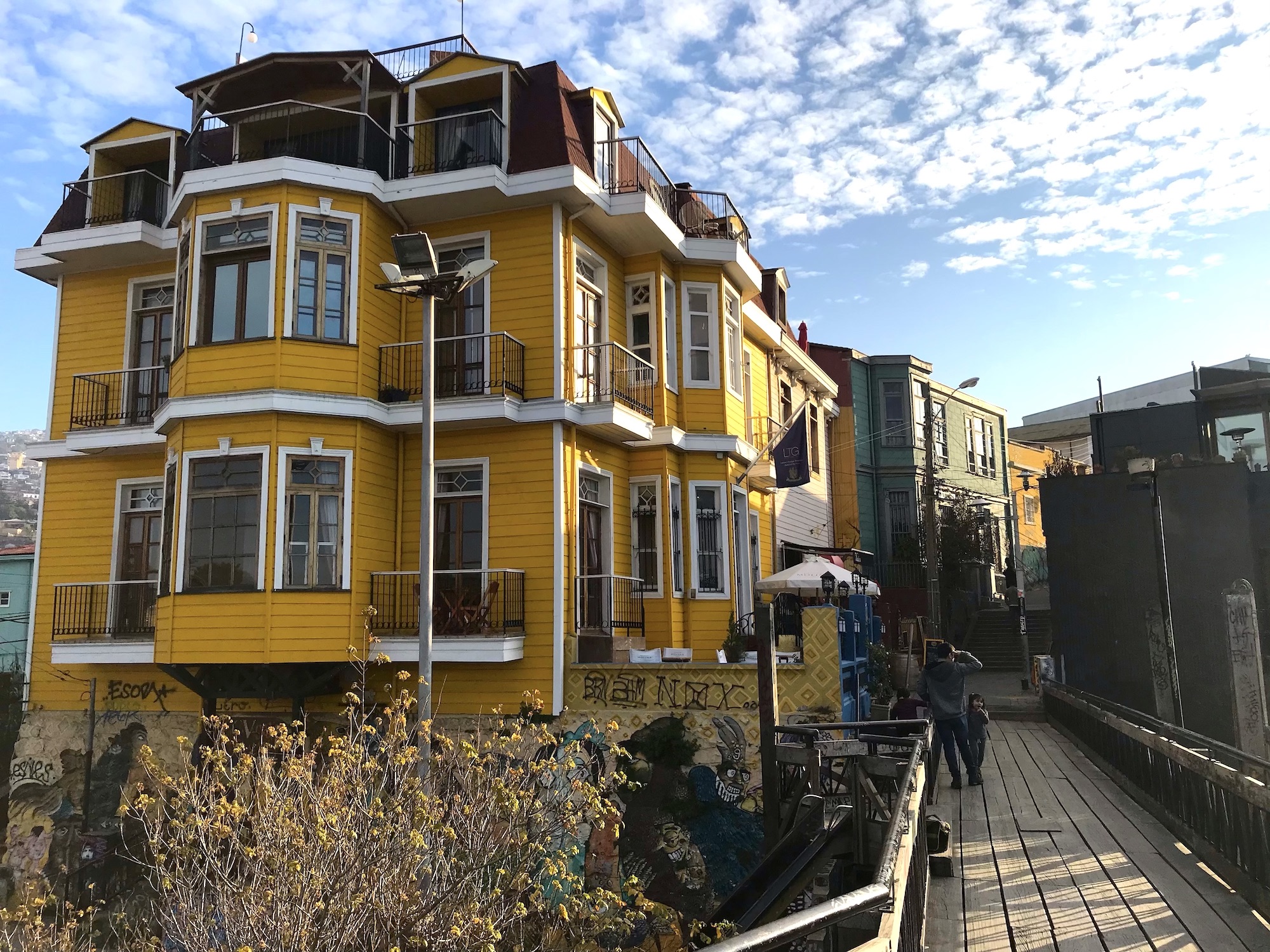
Driving out of Valparaiso
The next early morning we were on our way out of Valparaiso taking the coast road towards Pucón, a mountain resort near Villarrica lake and volcano. We planned to stop there for few relaxing camping days before going back into Argentina.
Leaving Valparaiso behind we assisted to some jaw-dropping top-hill views of the Pacific Ocean and a beautiful sunrise was spreading in the horizons. The road had plenty of inviting recreational sites which made the ride even more pleasant.
But as soon as we got to the outskirts of the city port we noticed kilometers of “favelas” of the coast’s highland. “Look at that this prime real estate location occupied by the communities” I told JP. “Pity” he added.
Despite the apparent development and growth of the economy, it seemed that there were still marginalized societies at the brink of poverty. Moreover iOverlander, travel application, continued to warn us about robberies not only in the port area of Valparaiso, but as well at the gas stations near Santiago, the capital of Chile. We were somehow puzzled about these contrasts. We knew something for sure: we wanted to get out of the big urban areas as soon as possible.
The “Little Germany” of South America
We drove for two days towards Pucón. 100km before the resort, we stopped in the city of Temuco to withdraw some cash and watch the World Cup 2018 football match between Brazil and Serbia.
As we entered the small town we were somehow inspired to see how developed and well organized the community was. The roads were in a very good shape with large avenues, the city was clean and it had a pleasant urban planning.
The central square of Temucu was set around a nicely designed square with shops, banks and institutions arranged and designed it such a way that resembled of a small town in Germany. It was obvious Chile had a considerable European influence. We liked to call it, the Germany of South America.
It was a pleasant afternoon enjoying Brazil won with 2-0 against Serbia. But for one big pizza, 2 bottles of water and a crepe with Nutella, we paid 30 euros. “How can it be that much?!” we wondered. With 50 euro our planned budget per day in Chile we were derailing considerable from our financial planning.
The mountain resort of Pucón
Before exiting the country at Mamuil Malal Pass back into Argentina we wanted to spend some relaxing camping days in the nearby mountain resort of Pucón.
The Villarrica Lake positioned in the heart of the retreat with the white peak of Villarrica volcano facing the resort made an impression the moment we got in Pucón. Crossing through we noticed not only the amazing nature, but as well how nicely organized and decorated it was. There were plenty of manicured cottages, boutique shops with ski gear and clothing, artisanal chocolate shops, coquet souvenir stores, coffee shops and alluring restaurants. It resembled of a ski resort in Austria.
We spent the whole day strolling the touristic streets, exploring the area, admiring the abundant nature sights, trying to catch another World Cup 2018 football match while eating some local food and indulging into the home made chocolate exhibited in the glass cases.
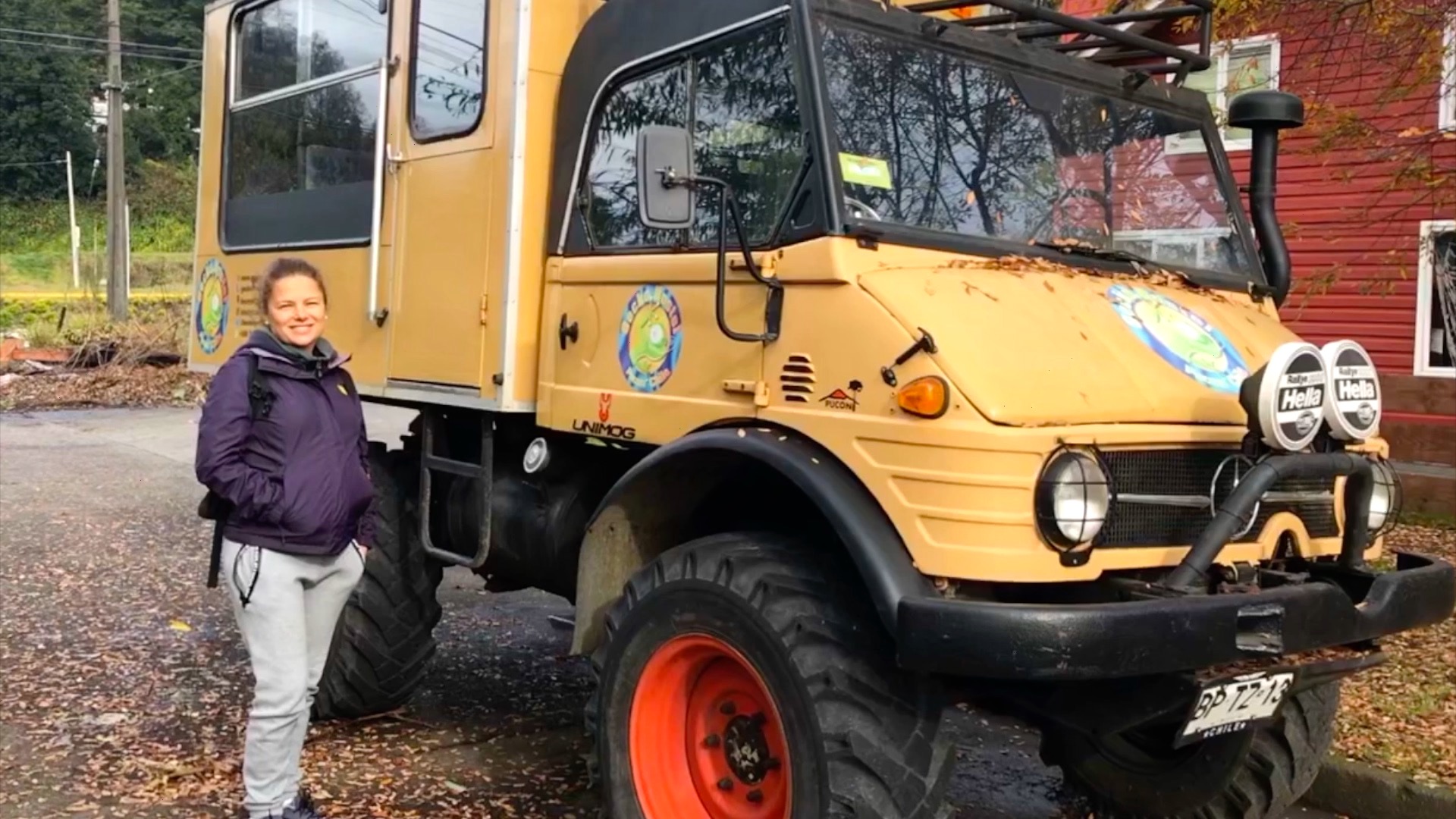
…until one scary moment
Everything was quiet and peaceful in Pucón until one moment. Curious to see the neighborhoods we adventured on a side road. About 100m from where we were we saw a German Shepherd in front of a house that had the gates opened. I looked at it from the distance and I observed the dog was a bit focused on us. That look was telling me something was going to happen if we would approach more.
“Let’s return and avoid the dog. I am a bit worried”, I told JP.
The moment we returned the canine started to run agile towards us getting ready to charge. It was like a nightmare coming true. In that second of “confusion” I climbed the nearby hill, while JP stayed in the same spot.
Firstly the dog went to attack JP, but after he didn’t manage to hurt him as JP defended very well, the German Shepard run towards me. For sure he found me a more vulnerable target.
I always feared dogs, but in this journey I learned to understand them more. I knew I had to keep calm and not move if they run towards me. It was hard for me to do so, but with the danger approaching and fearing about the baby’s safety, I stayed focused.
Applying “The Bag Technique” :))
For some reason in that fraction of a second I remembered a woman that was on TV defending herself from a crowd of vagabond dogs bouncing her bag up and down and around. It was in the news in Romania and it happened just few weeks back. Somehow that story of the woman who saved her life from the pack of dogs with her bag sticked to my visual memory. When the dog wanted to charge me, I applied the same tactic. I untied by backpack and defended myself bouncing it towards the huge German Shepard :))
In the meantime JP run towards the dog and threatened the canine with a big stone. That’s when the Shepard quit the battle and returned back to his courtyard. What an episode! My heart was bumping out of my chest.
In a fraction of a second and out of nowhere we found ourselves in a dangerous situation. Everything happened very quickly. We left wondering:
“Why would anybody leave the gates of a house opened with a fierce-full dog ready to charge people?” From a regular walk and a nice day the events could had turned into something regretful.
Towards “Fin del Mundo”
That night we slept in a camp ground next to the center of Pucón that had a generous grassy area. The nature was pleasant and plentiful, but the camp had no hot showers and internet connection. Adding to this the episode of the charging dog and the prices practiced in the resort, our stay in Pucón was shorter than planned. We knew Argentina would be a better fit for our scope and budget towards “Fin del Mundo”.
The following day we left Pucón towards San Martin de Los Andres, a mountain town on the other flank of the Andes in Argentina. Crossing Mamuil Malal Pass we got back into the altitude of abundant snow. The landscape and the weather reminded us of Alaska and British Colombia of Canada. We were already feeling the circularity of our story from the northernmost hemisphere to the southernmost one of the Americas. The scenery and climate were repeating. We felt closer and closer to “the end” of our Pan American journey.

